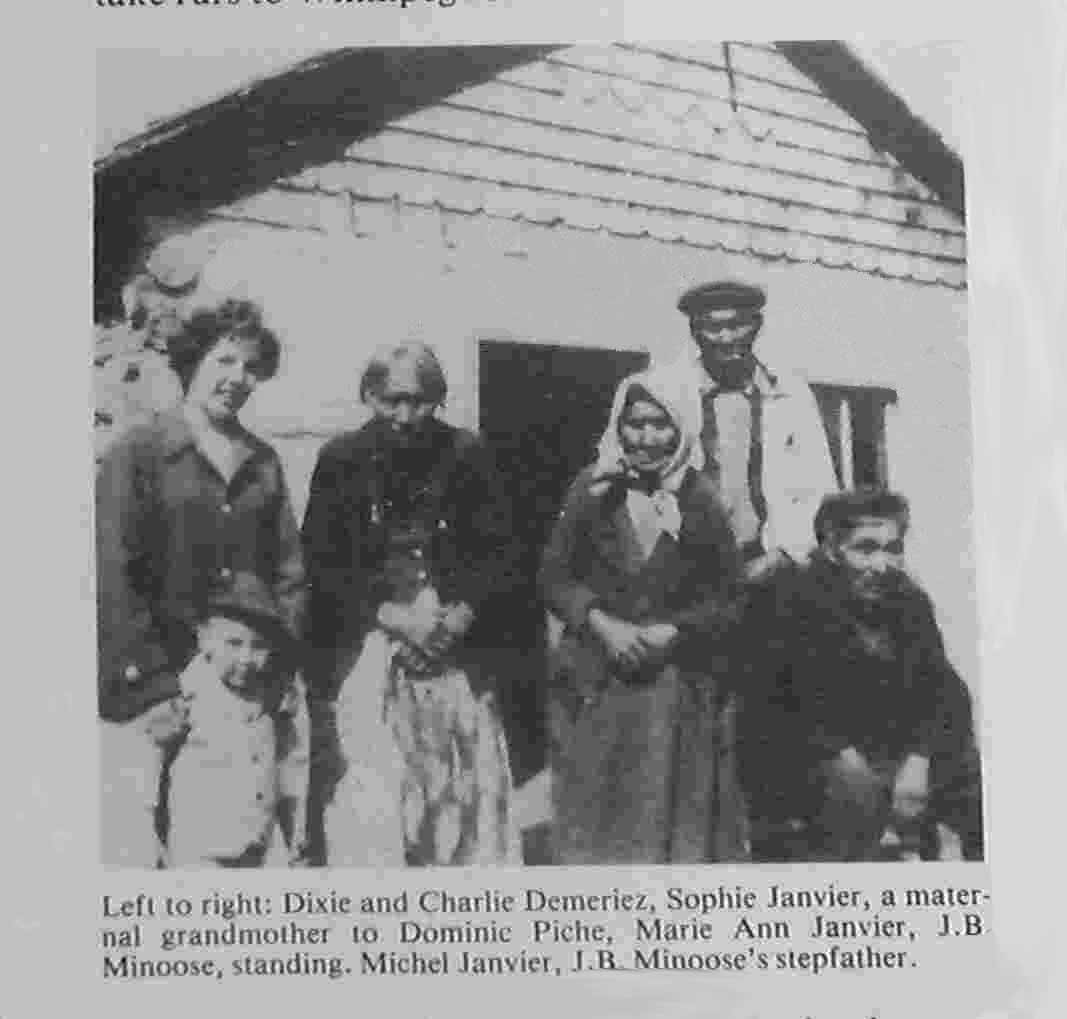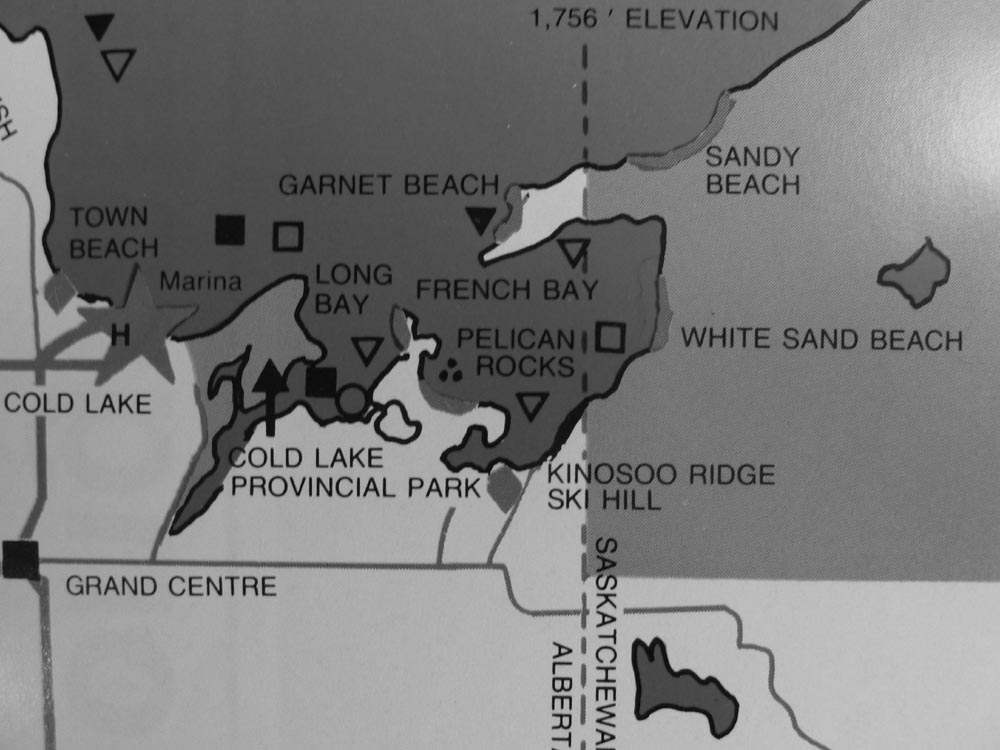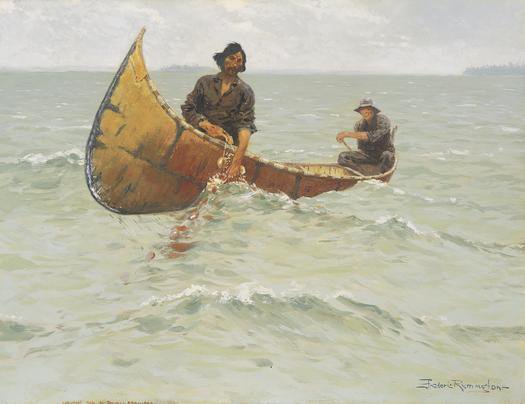The Big Kinosoo: Origin of the Legend – Chapter 1 of 6
The Big Kinosoo: Origin of the Legend – Chapter 1 of 6
Photo (Web Source): Fishing on Cold Lake in the Early Years
Link to Next Post: Monster Fish
Link to Last Post: Big Kinosoo: Growing the Legend
Link Back to Adventures Index
Cold Lake, Late 1800s
The following short excerpt is taken from a story by J.B. Minoose1, a friend of our family, Dave and Laura McNeill. We lived not far from Mr. Minoose and his family while our family was at the Martineau River logging Camp in the mid-1940’s. This was followed by two years at North Bay (Smith Place) on the North side of Cold Lake, then two years at Marie Lake which was 15 miles west of North Bay (reference Family Stories 1940 -1965). The Minoose story appears in Treasured Scales of the Kinosoo, a history of families in Cold Lake edited by Laura Dean Skarsen. Laura Dean Skarsen, was sister-in-law of our step-father, Wilfred Skarsen and our mother Laura Isabel Skarsen (McNeill) (Wheeler). J.B. Minooses (standing, second from right in photo) spoke of his life in Cold Lake:
 “I was born a Cree Native during the year of the Frog Lake Massacre on October 3, 1885, along the shore of Cold Lake at Birch Point. Through the years I have killed sixty-five moose, a few deer which I gave to my people, six bears and fourteen lynxes from which I got nothing. One time I stood behind a willow bush a two year old bear came. I whipped open the horse’s bridle at it and the bear was scared away.
“I was born a Cree Native during the year of the Frog Lake Massacre on October 3, 1885, along the shore of Cold Lake at Birch Point. Through the years I have killed sixty-five moose, a few deer which I gave to my people, six bears and fourteen lynxes from which I got nothing. One time I stood behind a willow bush a two year old bear came. I whipped open the horse’s bridle at it and the bear was scared away.
There are many stories about the Big Fish in Cold Lake but no one ever saw him. From Cold Lake wharf to Birch Point, many elk swam in the water. A bull elk with horns hit the big fish and killed him. The back bone and ribs like a cow’s were found at Birch Point.
The Chipewyan native passed the Big Fish first and the water was swirling in circles. The Cree native was going to fish for Kinachuk in his little birch bark canoe. The Cree native never came back because the Kinachuk swallowed him before J.B. Minoose was born.
Another time, in the deep water at the Cold River, a Chipewyan native wanted to sleep there all winter and a Cree native started to sleep there to. About March the water froze., the Chipewyan did not freeze but the Cree froze so the Chipewyan won.
My wife Elizabeth, died in 1957. She went to Heaven and I am waiting for her return – that is why I live so long. She was such a good woman and I never got mad at her. I am alone because if I ever get married again maybe it will be no good, but if my wife does not get back in time, I would like to marry a white woman.
I have moved into a new house at English Bay where I can smoke a cigarette and see what nature provides. (p. 7-9)
In another legend, the giant fish was named The Big Kinosoo2 and said to have killed a young Cree Warrior paddling who across French Bay to meet his betrothed. As the warrior paddled into the mouth of the bay at dusk, a giant fish came out of the water and demolished his canoe. As the warrior attempted to swim to short, the fish chased him down and devoured him.
Only bits and pieces of the canoe remained. It is said the villagers saw huge teeth marks in the wooden frame and large fish scales adhering to the birch bark that had washed ashore. For many years few Indians ventured near the mouth of French Bay for fear of the fish. If you sit quietly on the shore of French Bay at night, with the moon shimmering on the water and the mournful sounds of loons in the background, you can still hear the echoes of that far off tragedy.
In the mid 1800s, as reported by JB Minoose and others, a Chipewyan hunting party found a large bone, of a type that might have come  from a whale, buried in the sand at Birch Point. From that time forward and throughout the early 1900s, stories about encounters with the Kinachuk or Big Kinosoo have continued to emerge with a regularity that placed these stories beyond the pall of simple myth or legend. By 1920s word of the legend had spread across Canada and by the 1930s people from around the world were traveling to Cold Lake in hopes of catching a glimpse of that gigantic fish – some foolishly believed they could catch it.
from a whale, buried in the sand at Birch Point. From that time forward and throughout the early 1900s, stories about encounters with the Kinachuk or Big Kinosoo have continued to emerge with a regularity that placed these stories beyond the pall of simple myth or legend. By 1920s word of the legend had spread across Canada and by the 1930s people from around the world were traveling to Cold Lake in hopes of catching a glimpse of that gigantic fish – some foolishly believed they could catch it.
This story provides additional background about the ongoing search for the Big Kinosoo not contained in the Provincial Archives, Cold Lake Library or on the World Wide Web. It also provides more background on the growth of Cold Lake over the first half of the last century and, as well, concludes with a case study of how a modern day family, the van Ransburg’s of Fort MacMurray, became caught up in a search for that elusive fish and how the lives of the family was placed in mortal danger one stormy day in late August 2009.
Harold McNeill
Cold Lake, BC
August, 2009
Link to Next Post: Monster Fish
Link to Last Post: Big Kinosoo: Growing the Legend
Link Back to Adventures Index
1 J.B. Minoose lived at English Bay not far from where we lived after first moving to Cold Lake in 1944, first at the Martineau River Logging Camp, then to the North Bay (Smith Place) and finally to Marie Lake where we lived until 1949. During those years dad became very close to a number of the Indian people including J.B. Minoose.
2 The “Big Kinosoo” is used in naming various parks and beaches in and around the Cold Lake area. The name also appears on much of the tourist promotional material for the city.

(5766)
Tags: Big Kinosoo, Blood Red the Sun, Charlie Demeriez, Dixie Demeriez, Dominic Piche, J.B. Minoose, Laura Dean Skarsen, Kinachuk, Marie Ann Janvier, Michel Janvier, Sophie Janvier, Treasured Scales of the Kinosoo, W.C. Cameron, William Cameron
Trackback from your site.


Comments (1)
Hi
These are great stories! Thanks for publishing them on the web. Kinosoo Ridge was my first skiing experience, and I always wondered where the name came from.
I am doing some research on the Martineau River and was wondering if you had any information regarding the Martineau River Mine or the camp that is at that location. It is located approximately 10 km north/northeast of the mouth of the river (as the crow flies). I am guessing fairly close to where the logging camp was situated.